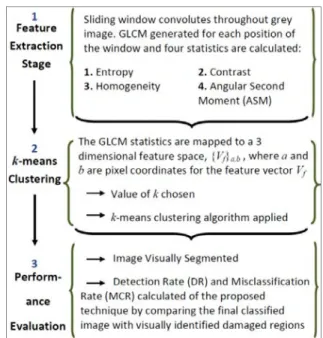Texture Analysis based Detection and Classification of Surface Features on Ageing Infrastructure Elements
Texte intégral
Figure


Documents relatifs
The third chapter will shed the light on the negative side of cultural appropriation and when it becomes inappropriate throughout American history African-Americans have been
Co-occurrence matrices can describe a texture in terms of its statistics. A co- occurrence matrix can be viewed as a generalized/abstract form of a two
In the paper by Jojic, Frey and Kannan[42], when the epitomic representation is used within a hierarchical generative model, appropriate inference algorithms can be derived to
Scheunders, “Wavelet-based colour texture retrieval using the Kullback-Leibler divergence between bivari- ate generalized Gaussian models,” in Image Processing, IEEE
Abstract.- The texture problem and the Goldanskii-Karyagin effect are easy to survey if the inten- s i t i e s of the transitions are written in terms of the intensity matrix.. For
This paper presents, a statistical approach for texture clas- sification, using the Generalized Gamma Density (GG), and the Dual Tree Complex Wavelet Transform decomposition.
The key phenomena distinguishing the action potential from the resting potential (shown as stage 1 in Figure 2-3) is the fact that the membrane conductance to
Salma Besbes-Hentatia, Hechmi Saida, Marcel Bouvetb aLaboratoire de Thermodynamique et d’Electrochimie, Faculté des Sciences de Bizerte, Tunisia. bLaboratoire de